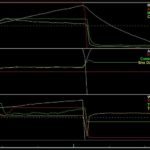Trash
As I have been cleaning out my closets, I have collected more data.
The graph below shows how much I paid for garbage pickup since 1996. This is surprising for many reasons. (1) It was surprising to see I had nearly every statement all the way back to 1996. (2) For a while, garbage costs were pretty low and flat and (3) moving to the City of Portland is always the expensive move. 😉
The red line is the actual cost per 96 gallon trash can, and the big jump in 2011 is from both moving into Portland as well as Portland deciding that for the same money they were only going to pickup trash once every other week. You can see the rise in inflation over the same time period, but even taking that into account the overall cost now is higher compared to 20 years ago. Cost for 96 gallons of trash in 1996 = $4.03. Cost for 96 gallons of trash in 2017 (in 1996 dollars) = $12.96. That is a 221% increase.













